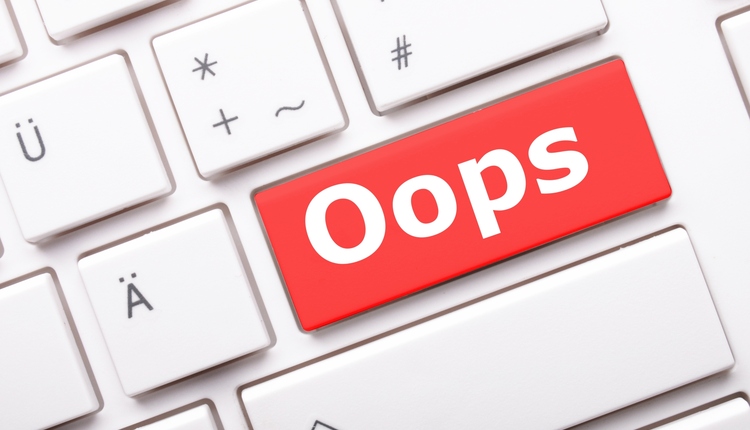![Image_8[1]_14 Image_8[1]_14](https://cms-static.wehaacdn.com/mailingsystemstechnology-com/images/Image_8-1-_14.306.0.0.jpg)
Want to save yourself $30,000?
You might believe that by now all the excess cost has been driven out of high-volume automated document applications like invoices. Document center managers and mailing professionals have been scraping to save fractions of cents anywhere they can to meet corporate budgetary guidelines. It may seem that there's nothing left to be done.
I was surprised to run into a couple of instances lately where an opportunity to cut more expense had not been implemented by the mailers. Once I pointed out the easily-obtained benefits, they had one of those "why-didn't-we-think-of-that" moments.
Even with all the efforts given to promote e-bills, digital mailboxes, and saving forests many companies have leveled out at a 15% - 20% paperless adoption rate. Customers who still want paper bills outnumber the digital adopters five to one. Barring heavy-handed tactics like charging exorbitant amounts for staying with paper, companies aren't likely to see a huge increase in the number of customers opting out of printed invoices over the next few months. The savings to billers from migrating customers to digital delivery channels will eventually materialize. But the benefits are likely to be spread across several years. Convincing customers to convert will require some money spent on such items as customer incentives or promotional advertising, thus lessening the net financial advantage.
Online bill-paying, however, is extremely popular with consumers. A 2013 survey conducted for Western Union concluded that overall, only about 20% of US consumer bills are paid by mail. Customers use a variety of other payment methods including paying by phone, biller-hosted online portals, or financial institution's bill-payment functions. Your individual statistics may be different. But do you know which customers typically pay electronically? Can you flag those customers and suppress the insertion of remittance envelopes sent along with their bills? If so, you can buy fewer envelopes, help the environment, and lower your costs.
Check to see if you have customers enrolled in recurring payment arrangements. None of these customers need a remittance envelope. One company told me 25% of their customers who receive paper bills every month pay them via direct debit. The company is going to save over $30,000 a year when they stop inserting useless return envelopes - on just this easily-identified group! The change won't cost them anything besides a little time to modify the barcodes used to control the insert feeders on the mailing machine. But they will lower their expenses with virtually no negative effects imposed on their customers or their own document operation.
Mike Porter is an expert in Print and Mail operations and President of Print/Mail Consultants. For more helpful tips, visit www.printmailconsultants.com and sign up for their free newsletter for document operations, Practical Stuff. Or look for his book "Take this Job and Stuff It! â¬" A Practical Guide for Document Operations Managers" in the Mailing Systems Technology online store.
You might believe that by now all the excess cost has been driven out of high-volume automated document applications like invoices. Document center managers and mailing professionals have been scraping to save fractions of cents anywhere they can to meet corporate budgetary guidelines. It may seem that there's nothing left to be done.
I was surprised to run into a couple of instances lately where an opportunity to cut more expense had not been implemented by the mailers. Once I pointed out the easily-obtained benefits, they had one of those "why-didn't-we-think-of-that" moments.
Even with all the efforts given to promote e-bills, digital mailboxes, and saving forests many companies have leveled out at a 15% - 20% paperless adoption rate. Customers who still want paper bills outnumber the digital adopters five to one. Barring heavy-handed tactics like charging exorbitant amounts for staying with paper, companies aren't likely to see a huge increase in the number of customers opting out of printed invoices over the next few months. The savings to billers from migrating customers to digital delivery channels will eventually materialize. But the benefits are likely to be spread across several years. Convincing customers to convert will require some money spent on such items as customer incentives or promotional advertising, thus lessening the net financial advantage.
Online bill-paying, however, is extremely popular with consumers. A 2013 survey conducted for Western Union concluded that overall, only about 20% of US consumer bills are paid by mail. Customers use a variety of other payment methods including paying by phone, biller-hosted online portals, or financial institution's bill-payment functions. Your individual statistics may be different. But do you know which customers typically pay electronically? Can you flag those customers and suppress the insertion of remittance envelopes sent along with their bills? If so, you can buy fewer envelopes, help the environment, and lower your costs.
Check to see if you have customers enrolled in recurring payment arrangements. None of these customers need a remittance envelope. One company told me 25% of their customers who receive paper bills every month pay them via direct debit. The company is going to save over $30,000 a year when they stop inserting useless return envelopes - on just this easily-identified group! The change won't cost them anything besides a little time to modify the barcodes used to control the insert feeders on the mailing machine. But they will lower their expenses with virtually no negative effects imposed on their customers or their own document operation.
Mike Porter is an expert in Print and Mail operations and President of Print/Mail Consultants. For more helpful tips, visit www.printmailconsultants.com and sign up for their free newsletter for document operations, Practical Stuff. Or look for his book "Take this Job and Stuff It! â¬" A Practical Guide for Document Operations Managers" in the Mailing Systems Technology online store.
















